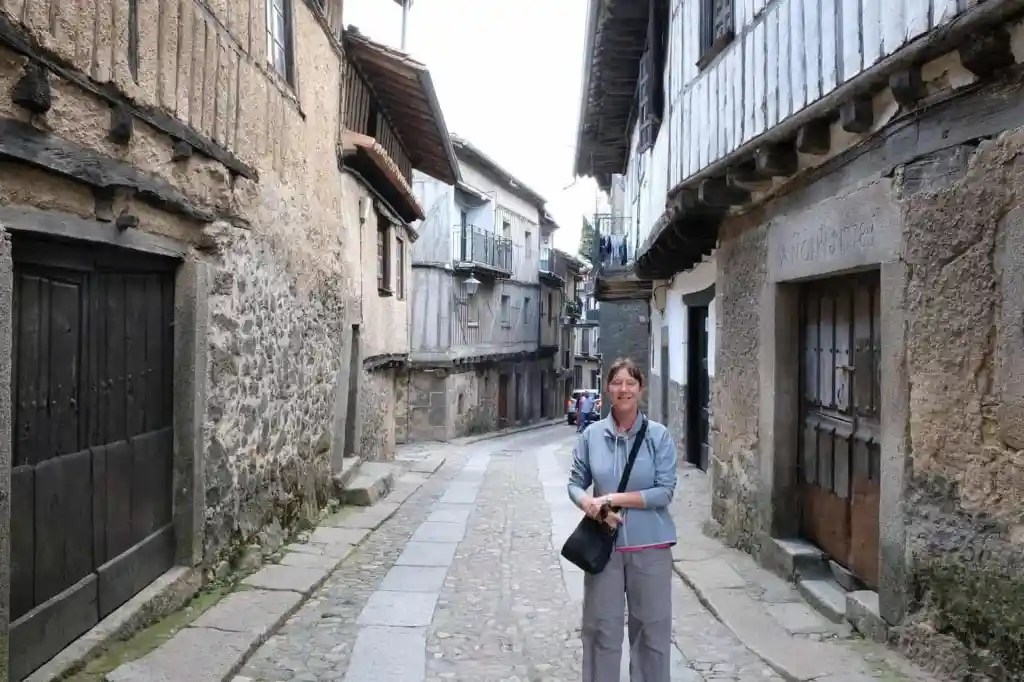As is the case, most visitors to Spain, particularly to Madrid, often manage to see the many impressive mid-sized cities of interior Spain…Salamanca, Segovia and the like… and we were no different in our thinking. But we had the ability to travel to parts less known and seeing Spain’s rural, off-the-beaten-path sights.

We were interested in a day trip from Salamanca and had received two separate and independent recommendations to travel to the Sierra de Francia area, which is preserved in the traditional Spanish style, unspoilt by tourism and provides a glimpse of rural alpine life. It was sold to us as a beautiful and less-well-known area south of Salamanca. This is a splendid region in Castilla y Leon.



The Sierra de Francia is an area hidden away in southwestern Castilla y León. Judging by the villages, it may as well have been secluded for centuries. It is a mountainous region with wooded hillsides and stone-and-timber villages. You can almost visualise that this was once one of Spain’s godforsaken regions, almost isolated during the depths of winter and even today, untouched by commercial interests. It is among Castilla y León’s best-kept secrets. The quiet mountain roads connect villages and the pace of life appears to be relatively untouched by the modern world. Situated in the south-east of the province, amidst the Sierra de Francia range, are not-to-be missed places such as La Alberca, a village with National Historic Heritage status, and Miranda del Castañar, an Historic-Artistic Site, as well as natural beauty spots such as the Peña de Francia rock and the Las Batuecas valley.

The main natural attraction of the region is the highest peak in the area, Peña de Francia (1,700+m). Topped by a monastery (sanctuary) and reached by a sinuous 12km climb from close to La Alberca, it’s a stunning place with views that extend east to the Sierra de Gredos, south into Extremadura and west towards Portugal. The Pena de Francia is quite isolated and you receive a 360 degree panaroma of the surrounding region.
The monastery and church receives visitors during the summer months including many Christian pilgrims due to snow and inaccessibility in the winter. In addition the sanctuary, has a friary and a separate guest quarters for the monastery for the pilgrims travelling the Way of St James.




Sierra de Francia’s villages are a mix of historic and pleasant narrow alleys flanked by ramshackle houses built of stone, wood beams and plaster. Our first stop was the ‘large’ town of La Alberca, total population of around 1,000. This is a town that you visit to, well, just walk around and not hesitate to take in small streets and alleys. This is a beautiful little village.

We noticed the date that these houses were built, typically the late 18th century, carved into the door lintels. I wouldn’t say the town is a secret in the region, since there were large groups of local tourists visiting it. But it’s not so well-known outside of the region, despite its clear beauty and tourist appeal. This village is beautifully preserved. Every corner is a delight with its stone houses, wooden balconies, flowers, fountains. The white with wood stripes architecture was typical in this area and this makes the main plaza particularly pretty.






The Sierra de Francia is in the heart of Spain’s jamon iberico de bellota country. It is dry and has become a major centre for producing the famed Spanish ham (noted by many jamon iberico manufacturers and fields of acorn trees, which gives these special pigs the unique flavour). La Alberca has small producers, unlike the larger producers that we saw during our drive through the region.

We also travelled to the smaller villages (if that is at all possible!) of Miranda del Castañar and its medieval castle and quaint streets.

Miranda del Castañar is similarly intriguing, strung out along a narrow ridge with flowers cascading from balconies and pretty cobble-stoned alleyways and rural stone houses. Miranda del Castañar is a completely walled town with a well-preserved urban area, full of steep narrow streets with stone houses that have wooden balconies – a good excuse for a quiet walk.







